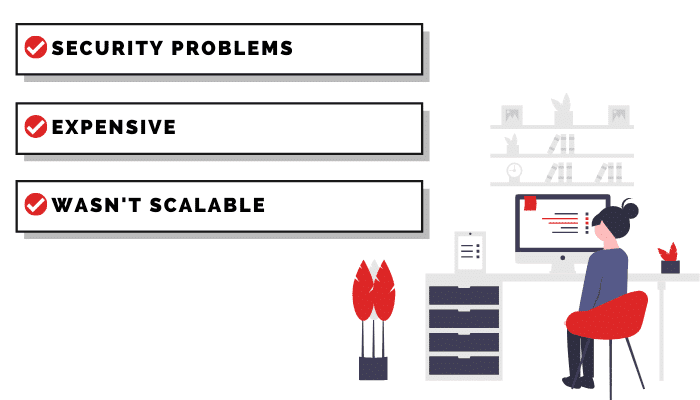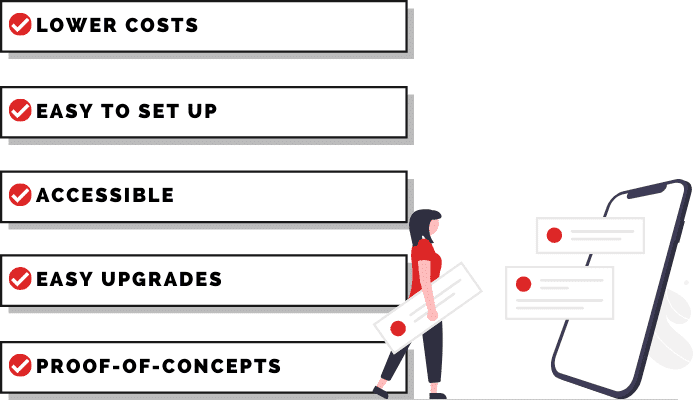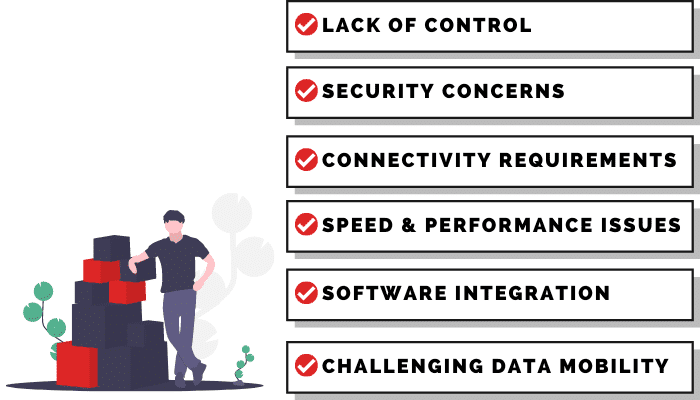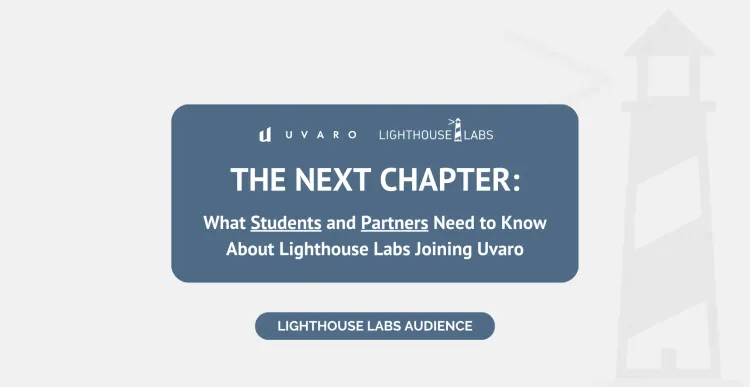The History Of SaaS (Software-As-A-Service)
The history of SaaS is undoubtedly interesting. But what you need to know about SaaS is the advantages & disadvantages it has. What can SaaS do for you & your future?

Aug 23, 2022
Technology has continually improved since time began, but the global technology industry as we know it only started to take shape in the late 20th century. Today, the tech industry is worth an estimated $1.6 trillion and continually growing.
Experts expect the technology industry to reach a value of $5 trillion by the end of 2021. As a result, the technology industry is the world’s fastest-growing industry. And SaaS is one of technology’s fastest-growing and most promising sectors — this is why it's so important to understand the history of SaaS before diving into it as a career!
The Story Of SaaS
It all started in March 1999 when three co-founders created the first SaaS company. The world witnessed a boom in broadband, the internet, mobile phones, and browsers. In turn, the SaaS industry grew over the past twenty years, until today, where economists value the industry at $123 billion.
Do you remember when we had to visit our local hardware store to get the newest software CDs? It was only 10-15 years ago. Having to purchase your software physically created many problems for businesses and was embedded into the history of SaaS and its need for evolution.

- Security problems: One of the biggest complications with old software is security vulnerabilities. Many old software CDs would only work on specific operating systems. Companies would continue to use this software on new operating systems, and in turn, jeopardize their own security. SaaS is always upgradable, and you’ll never have an issue updating the software and maintaining high-security standards.
- Expensive: When companies used to buy old software, they would have to buy a one-off expensive software package. SaaS, on the other hand, is more cost-effective and it allows small and medium-sized companies to be able to afford the latest software. Many of these small to medium-sized companies couldn’t afford the old software packages before a subscription model came into the market.
- The old software wasn’t scalable: SaaS is scalable, and you can use it with all employees in various offices without having to purchase new software. You can also scale the software up and down depending on the success of your business. In contrast, old software wasn’t scalable and that created many problems.
The history of Saas is impressive and best of all? It has improved the lives of millions, revolutionizing how companies globally operate. Experts believe it will be one of the fastest-growing industries of the decade.Here are some pros and cons of the cloud-based and subscription-style software models that are growing in popularity.
The Advantages

1 - Lower costs
SaaS is predominantly a subscription-based model and has zero upfront costs. Of course, in 1995, you would have to extortionate costs for software upfront. Furthermore, the provider themself manages the IT infrastructure instead of the business. Meaning there are fewer maintenance costs. Companies in turn don’t have to hire as many IT specialists. The providing company also splits maintenance costs between customers. By doing so, the cost of general maintenance is reduced.
2 - Very easy to set up
Do you remember those days when installing software was long, complicated, and arduous? This is a forgotten element of the history of SaaS. Now, SaaS is incredibly straightforward to set up. In most cases, the company already has the software set up in the cloud. Through this, they reduce the chances of delays. Time is then saved when trying to set up the software on various office computers.
3 - It’s very accessible
You only need an internet connection to use SaaS, and it can be accessed through various browsers. That makes SaaS available in most places worldwide. As long as the place doesn't have any governmental restrictions on internet access. It is definitely more accessible than your typical business software.
4 - Easy upgrades
As we already discussed, old software didn’t come with upgrades, and when you changed your operating system, there’s a good chance you would need to change your software. That created immense hassle for businesses and individuals throughout the world. However, because SaaS handles all the hardware and software upgrades, it removes all the hassle and costs away from you.
5 - Proof-of-concepts
One of the greatest benefits offered by many SaaS companies is being able to perform software functionality tests or new release features in advance. Also, many large SaaS companies offer software tests before you commit to purchasing the subscription model.
The Disadvantages

1 - Lack of control
When companies have an in-house software application, it inevitably gives companies more control than a hosted software solution. In almost all cases, the company will have to use the latest version of the software without a say on the matter. Also, what if a company wants to postpone an update and wait? In most cases, that’s not possible and becomes a dilemma for many companies.
2 - Security concerns
Although SaaS is generally very safe, some companies have security concerns because of its cloud-based nature. There have been breaches of security in the past, and although these breaches are rare, companies are aware that they can happen. Common issues that companies encounter include access management and identity. If the company uses various cloud services and an employee leaves, deactivating the account of an ex-employee can become a headache.
3 - Connectivity requirements
The SaaS model is based on connection to the internet, and that’s not usually an issue. However, if your business has an internet outage or the local area has a connection issue, your company may have massive issues. Furthermore, human error can also bring cloud software down and cause vast issues for companies because you can’t hire someone to fix it ASAP because the server isn’t in your office.
4 - Speed and Performance issues
For the most part, SaaS is fast and reliable, but there are times when SaaS lags behind in-house software in speed and performance. That’s often because a local machine doesn’t host your software. Using corporate LAN often provides a more stable performance than SaaS.
5 - Difficult software integration
Although the SaaS model is becoming way more popular, there are various applications that you can’t obtain on the platform. For example, companies that use multiple SaaS applications or would like to link SaaS with existing local applications may face integration problems. Companies may need to perform compatibility checks at early stages to determine whether it’s possible to integrate SaaS with other software.
6 - Challenging data mobility
The SaaS market is full of exciting startups, yet many of them fail to survive in such a competitive industry. As a result, that could become a challenge for companies. One of the biggest issues that may arise from this is the lack of data mobility. For example, local standards can limit the transfer depending on the type of data, the country where the data is located, the rights of the users, and whether you can arrange alternative storage. If the SaaS company has any issues and you need to transfer data, this might be an issue for your business.
Notable companies and products that are adopting the SaaS model
- Microsoft: Microsoft is one world’s most famous software companies, and in the past, you would have to buy Microsoft software through CDs. However, Microsoft has turned their business into cloud products, and you can easily download these from any location with an internet connection.
- Antivirus products: Do you remember the days when you purchased McAfee antivirus software from the computer store in a box? Those days are long gone because you can buy antivirus products online through a cloud subscription with automatic renewals.
- Specialized software systems: Historically, you would have to purchase specialized software systems through a specialized technician. Today, you buy specialized software systems from a website and they renew automatically with minimal effort.
The Future of SaaS
Most software is now turning into a cloud-based subscription model, and the future of SaaS looks incredibly promising. Businesses should recognize that the growth of SaaS isn’t going to slow down, and the COVID-19 pandemic has increased the growth of SaaS.
Moreover, faster and more reliable internet worldwide mixed with lower barriers to entry have created a new generation of SaaS tools. In turn, some SaaS companies have now built shops to fill gaps in communication, make more sales, and create more efficiency.Some of the top future trends impacting SaaS include the following:
- Artificial Intelligence
- Machine learning
- Centralized analytics
- Migration to PaaS
- Micro-SaaS
- Enhanced mobile optimization
- Low-code capabilities
- Vertical SaaS
- The growing need for API connections
These trends are likely to shape the future of SaaS in the next few years. Various developments from the last 12 months have spilled over to this year and continue to pave the way for brand new concepts. Data will continue to be the powering force behind many smart business strategies in a growing digital-dependent world, and SaaS options will continue to be affordable and convenient for small to medium size companies.
If companies continue to embrace these SaaS trends, trust their products, and keep their fingers on the pulse, they will hit the ground running in 2022 by using SaaS in their business.
SaaS And Uvaro
Liked learning about the history of SaaS and ready to start learning more about selling it? Uvaro is here for you!
Uvaro provides courses to people of all sales experience, and the course provides you with the soft skills, careers guidance, and knowledge to achieve amazing success in tech sales. The history of SaaS is just a teaser!
We would love to hear more from you. Apply now! And if you have any questions, feel free to get in touch with us!






